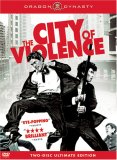| Reviews & Columns |
|
Reviews DVD TV on DVD Blu-ray 4K UHD International DVDs In Theaters Reviews by Studio Video Games Features Collector Series DVDs Easter Egg Database Interviews DVD Talk Radio Feature Articles Columns Anime Talk DVD Savant Horror DVDs The M.O.D. Squad Art House HD Talk Silent DVD
|
DVD Talk Forum |
|
|
| Resources |
|
DVD Price Search Customer Service #'s RCE Info Links |
|
Columns
|
|
|
City of Violence - Dragon Dynasty, The
The Weinstein Company // Unrated // September 4, 2007
List Price: $24.95 [Buy now and save at Amazon]
Korean revenge films have emerged as a genre du jour within the past five or so years. Intriguing, primitive, and ravishingly brutal, they've plastered foreign film fans with fanatical context as of late. The City of Violence (Jjakpae), however, harnesses glimmers of this same potency with a bit of a different direction within its tale of revenge. Korean Director Ryoo Seung-wan, an enthusiast of Hong Kong cinema, instead opts for an enthralling and rampant martial arts style pumped to the max with exuberant instinct. With these stylish choices, The City of Violence gives us some iconic and memorable glimmers within a flawed but engaging ride.
The Film:
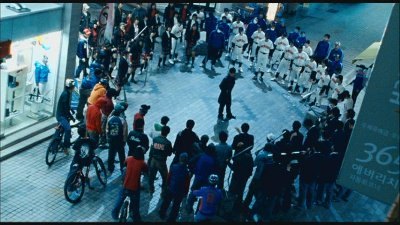
Ryoo Seung-wan's film keeps things simple with a subtly interwoven story. Tae-su (Jung Doo-hong), an officer focused on organized crime, returns to his hometown when one of his five close high-school buddies is murdered. As he returns, Tae-su sees that his city's infrastructure is in shambles. It all revolves around the corpulence of another of his childhood friends, Pil-ho (Lee Beom-su), and his desire for wealth and fortune as the resident underground "king" of the town. Amidst this friendly reunion, he's rigorously working to throw together a new casino in town for an outside contractor by snatching up as many resources as possible from the city. Once Tae-su and Seok-hwan (Ryoo Seung-wan), the wild card of this original five-some, aggressively turn the town upside down for their friend's killers, they unearth several secrets about his death that could pit friends against each other and rustle up buried memories of their past.
The City of Violence is a kinetic, viscerally charged power surge fueled by an impeccably devised level of stringent action. This lower-budget modern revenge flick overflows at the seams with brisk combat and hyper-stylized cinematography. Plain and simple, you see a lot of the throbbing heart of wonderful Korean filmmaking running rampant within this film. Though it's easily comparable to films like Tarantino's Kill Bill in texture and motive, this tale of brotherly vengeance embodies a rawer attitude that's more gritty and jerky within its stylized polish. It opts to crank its gears with a punchier martial arts style, yet you still see a lot of smartly striking displays that jump into our vision. The City of Violence isn't terribly original or believable with its scuffled narrative, but the valiance behind its fervent style slyly sweeps these follies underneath the carpet.
Ryoo Seung-wan has cultivated a lot of influence from several films, both Western and native, when intricately assembling The City of Violence, especially in aesthetic formulation. Instead of coming across as purely kitschy, these little glimmers are a lot of fun. The fervent soundtrack blends several different styles, ranging from '20s style tracks, raging rock chords, and throbbing ambient techno all the way to the prominient tracks reminiscent of American Western accompaniment. We see iconic thugs dressed in white a la Woo's The Killer, while we also see street thugs dressed in face-paint and ramshackle baseball outfits with "Warriors" emblazoned across the chest. And, while enjoying the ensuing chaos on-screen, it all gets eaten up in massive jubilant spoonfuls.
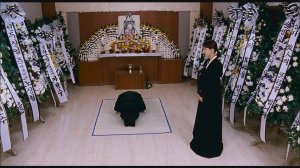
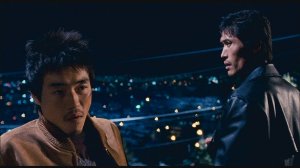
It doesn't hurt this visual consumption that The City of Violence's photography is incredibly sharp. A lushly captured color palette pumps flair into the film, making it furiously jump from the screen. Acidic blues of downtown fighting scenes and robust reds of VIP carpets scream with an aching rage that begs for attention around every corner. It's quite obvious by the ridiculous detail trounced into every frame that a lot of care was taken into capturing this visual style, especially within the Pekinpah-esque grandiose finale that goes down in a posh Asian-style club.
Though it's not really a character film like it could've easily cranked out to be, the overall acting performances are serviceable enough to dodge "wooden" status. They don't shine enough to give us moments of real brilliance, but each of our three key characters receives enough flesh and bones to be the perfect amount of compelling for such a feature. One thing to bear in mind is that our key protagonists, Ryoo Seung-wan and Jung Doo-hong, also double as our film's director and fight choreographer. Seok-hwan and Tae-su keep an aggressive and cheeky keel without deviating much from their natural attitudes. For their dual roles, I was pleasantly satisfied. I was equally satisfied with Lee Beom-su's Pil-ho as a weakling mob-king persona. His yelling and slimy attitude gets a bit grating, as should his character in retrospect I suppose.
By and large, the most tangibly 'awesome' component of The City of Violence lies within Jung Doo-hong's exceptional fight direction. His team's guided choreography achieves brazen aggression without toppling over itself with excess. Yeah, you get that nice jaw-dropping effect at a few killer displays here and there, but most of the first-rate battles remain down to earth. The City of Violence, at times, suffers a bit as a complete film solely because it focuses too tightly on these great sequences. Thankfully, we're working with fights that combine both amazement and realism. The use of wires for boosted jumps and delayed kicks kindly stay out of this film, giving every spiraling and flailing movement a sense of gravity with which we can invest our belief. Our heroes aren't superhuman, not even flawless. Director Ryoo Seung-wan bears this in mind as he launches them into countless eye-catching fisticuffs before our eyes.

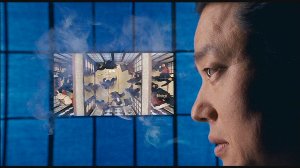
The City of Violence grips us within its blitzed pace, twists our nerves, and even makes us chuckle with some quaintly placed humor in the pandemonium. There's a great scene where Tae-Su and Seok-Hwan stand in front of what seems to be two villains, and at the drop of a dime turns into twenty. Their expression at this somewhat overplayed reveal, though done with a very cheeky panache, is priceless. I was surprised at how nonchalant and comfortable this film could be amidst anarchistic mob battles and greedy conflicts. It's a film with a well-defined and enveloping mood, one that our crew has a firm eye on. Ryoo Seung-wan knows when to push buttons and when to replace tension with tongue-and-cheek; however, there's neglect towards the reasonability and belief in some of these turns as well. It's enough to induce a little headscratching, but not enough to deplete from the film's fun factor.
All the way to its loud, blood drenched finale, The City of Violence waltzes up to us loaded with a heaping dosage of everything that makes a quality popcorn martial arts action flick. It gracefully shades over some ample flaws, thus making it nowhere near flawed enough to detract from its testosterone-injected gravitas. This is a flick that should satisfy the palettes of action fans, revenge flick enthusiasts, and HK-style martial arts lovers alike. Coming from a film nut who finds it difficult to enjoy action for pure action's sake, I know The City of Violence sure showed me a good time.
The DVD:
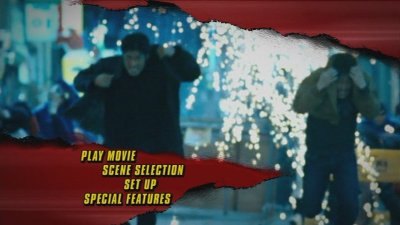
The Weinstein Company's Dragon Dynasty line presents The City of Violence, Spine #18, in a standard double-disc hinged keepcase. An uber-shiny slipcover featuring our stalwart heroes adorns the front cover, as well as both discs. The menus are nicely animated with scenes from the film playing within torn-out parts on the screen.
The Video:
The City of Violence exhibits photography achieved through some slick Super 16mm photography. Sporting anamorphic enhancement, the transfer of this film's roots looks quite sharp. Colors were wholly solid, though at times a little oversaturated with skin tones and bright lights. However, taking this wholly intentional grainy film selection into effect, I really enjoyed the visual presentation of The City of Violence. There's a lot of harsh blues and silvers filling the print, yet many other loud colors pop into frame as well once demeanor changes within locales. The lights of the city, interior lushness, and glaring colors of beautifully dated clothes all popped with depth. Detail wasn't exceptionally fluid, though that's part of the intent through the photography choice. The City of Violence carries a great visual style, and it shows with fervor on this DVD.
The Audio:
Three options to pick from, two of the Korean varietal and one in English with very amusing language. As can be expected, Dolby 5.1 is available and wholly strong. The stronger option to go for here is the Korean DTS track included. The City of Violence sounded very swift in this aural presentation. First off, the vocal strength and music sound very fluid. When comparing the two, the DTS track delivers mildly tighter bass, as well as a richer crispness in higher pitches. Plenty of slices, crashes, socks, rocks, and screams fill the speakers with strength, though the surround capacity felt a tsd empty. It's not the epitome of rock-'em, sock-'em DTS tracks, but it is a very suitable and aggressive aural presentation.
Subtitle usage, however, is a little inconsistent. Grammatically and lyrically, everything seemed alright enough, though a good bit on the murky side. However, certain scenes didn't match up with subtitles from the trailer. Where the discrepancies lie, I cannot be certain since I do not speak Korean. As a whole, the subtitles are moderately solid without substantial deterrents. To say the very least, I can confirm that these subtitles are NOT just the English track regurgitated. In fact, comparing the two is extremely entertaining. Spanish subtitles are also available.
The Extras:
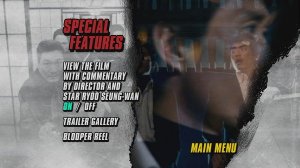
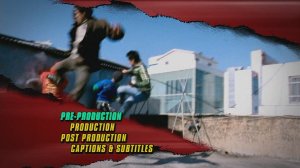
This Dragon Dynasty disc of The City of Violence reminds me exactly why I love DVD as a medium almost as much as I love film. We're sporting a mass of incredible extras that cover just about anything and everything you'd like to know about the film. When you dive into a DVD's extra features, there's a little checklist that receives marks for individual items. Commentary? Check. Making Of? Check. Poster Art? Check. There probably won't be a single thing left unchecked from your list for this film. For reference, all the extras included in these discs feature English subtitles adorning Korean speech.
On Disc 1 ...
- Audio Commentary by Actor / Director Ryoo Seung-wan -
After enjoying this entire laundry list of extras, the director's passion for film and this project is blatantly clear. It starts with his concisely rich commentary, in Korean with English subtitles, that delves into a lot of the intimate details of constructing the film. He discusses the rigorous schedules, production values, and many character motives. His fervency for the film is honest and wholly enjoyable to absorb.
- Trailer Gallery -
Three different trailers are included: Korean Teaser, Korean Theatrical, and the US Based trailer.
- Blooper Reel -
Rounding out the basic extras on Disc 1, the blooper reel is especially enjoyable during the fanatical fighting scenes. It's a pleasant transition going into the depths on Disc 2. Plus, you get to see some goofy computer characters pop up and maybe, just maybe, a few text bubbles above people's heads.
On Disc 2 ...
Disc 2 segments the much denser special features into three appropriate sections of the filmmaking process: Pre-Production, Production, and Post Production.
- Pre-Production -
A lot of the heart of this film pours through the segments of the Pre-Production pieces. Along with intimate interviews with the cast, especially Ryoo Seung-wan and Jung Doo-hong, we peer into the general cluster of initial ideas and emotive lightbulbs that flashed above the heads of the filmmakers. Hearing Ryoo Seung-wan clamor on about all his inspirations, from his growth as a director following his prior films to his love for Scorsese and Pekinpah, is all a rich delight. We see plenty of injuries, as both the main actors suffered from mild accidents that hindered the film's flow. Their persistence is in itself incredible. Watching these pre-production pieces is like watching a story within itself.
This section is separated out nicely into solid chapters: The Evolution of Action, Creating Emotive Action with Action Director Jung Doo-hung, The City of Violence: Development and Pre-Production, The Art of War: Conceptual Designs, and Battle Plans: Technical Tests and Pre-Training.
- Production -
Here we get to the bones and pieces of throwing The City of Violence together, ranging from the assembly of sets to interviewing all parties involved for their insight into the creation of the film. Some of this material gets a shade redundant when we overlap with topics, but that's just because the prior section is so expansive. Here, however, we're treated to more of the actual formulation of The City of Violence, especially within its intricate style of violence. The general Making Of portion leans more towards your typical marketing fluff, though if that's the worst they can do then it's worlds better than a lot of other discs.
Here's the separation for our production coverage: Performance Management: Interviews with the Cast of City of Violence, Blow By Blow: A Behind-the-Scenes Exploration of the Action Scenes from City of Violence, Two Against the Rest: The Making of City of Violence, A Walk on the Wild Side, and Council of War: A Commentary on the Movie's Action Sequences with Action Director Jung Doo-hung.
- Post Production -
Once the film has wrapped, we're treated to glimmers of how the film was received in Venice (including a bit of Q&A with the director), how they marketed it, and what exactly didn't make it into the final cut. The decisions for the deleted scenes make sense for the film's flow, while the poster assembly feature shows exactly how they captured our leaping heroes for the grand posters for the film. It's the least dense section, but each of these little features are interesting to watch.
Here's how Post-Production is divvied up: Deleted and Alternate Scenes with Optional Commentary, Behind-the-Scenes at the Venice Film Festival, and Designer Action: The Development of the Artwork for City of Violence.
-----
Final Thoughts:
The City of Violence won't bowl you over with dramatic poise. It should, however, do the trick with some taut martial arts sequences adorning a wholly engrossing backdrop. It's a simple story with simple characters, but from top to bottom The City of Violence brings the action-packed goods. You grow to appreciate the director's passion for the film through the extras and, in turn, grow to appreciate the intricate work into assembling the film as well. The City of Violence, though it's not the most innovative or substantial piece in the genre, comes very strongly Recommended for its kick-ass fight choreography and sharp visuals. Plus, it's just a whole lot of fun.
Thomas Spurlin, Staff Reviewer -- DVDTalk Reviews | Personal Blog/Site
The Film:

Ryoo Seung-wan's film keeps things simple with a subtly interwoven story. Tae-su (Jung Doo-hong), an officer focused on organized crime, returns to his hometown when one of his five close high-school buddies is murdered. As he returns, Tae-su sees that his city's infrastructure is in shambles. It all revolves around the corpulence of another of his childhood friends, Pil-ho (Lee Beom-su), and his desire for wealth and fortune as the resident underground "king" of the town. Amidst this friendly reunion, he's rigorously working to throw together a new casino in town for an outside contractor by snatching up as many resources as possible from the city. Once Tae-su and Seok-hwan (Ryoo Seung-wan), the wild card of this original five-some, aggressively turn the town upside down for their friend's killers, they unearth several secrets about his death that could pit friends against each other and rustle up buried memories of their past.
The City of Violence is a kinetic, viscerally charged power surge fueled by an impeccably devised level of stringent action. This lower-budget modern revenge flick overflows at the seams with brisk combat and hyper-stylized cinematography. Plain and simple, you see a lot of the throbbing heart of wonderful Korean filmmaking running rampant within this film. Though it's easily comparable to films like Tarantino's Kill Bill in texture and motive, this tale of brotherly vengeance embodies a rawer attitude that's more gritty and jerky within its stylized polish. It opts to crank its gears with a punchier martial arts style, yet you still see a lot of smartly striking displays that jump into our vision. The City of Violence isn't terribly original or believable with its scuffled narrative, but the valiance behind its fervent style slyly sweeps these follies underneath the carpet.
Ryoo Seung-wan has cultivated a lot of influence from several films, both Western and native, when intricately assembling The City of Violence, especially in aesthetic formulation. Instead of coming across as purely kitschy, these little glimmers are a lot of fun. The fervent soundtrack blends several different styles, ranging from '20s style tracks, raging rock chords, and throbbing ambient techno all the way to the prominient tracks reminiscent of American Western accompaniment. We see iconic thugs dressed in white a la Woo's The Killer, while we also see street thugs dressed in face-paint and ramshackle baseball outfits with "Warriors" emblazoned across the chest. And, while enjoying the ensuing chaos on-screen, it all gets eaten up in massive jubilant spoonfuls.


It doesn't hurt this visual consumption that The City of Violence's photography is incredibly sharp. A lushly captured color palette pumps flair into the film, making it furiously jump from the screen. Acidic blues of downtown fighting scenes and robust reds of VIP carpets scream with an aching rage that begs for attention around every corner. It's quite obvious by the ridiculous detail trounced into every frame that a lot of care was taken into capturing this visual style, especially within the Pekinpah-esque grandiose finale that goes down in a posh Asian-style club.
Though it's not really a character film like it could've easily cranked out to be, the overall acting performances are serviceable enough to dodge "wooden" status. They don't shine enough to give us moments of real brilliance, but each of our three key characters receives enough flesh and bones to be the perfect amount of compelling for such a feature. One thing to bear in mind is that our key protagonists, Ryoo Seung-wan and Jung Doo-hong, also double as our film's director and fight choreographer. Seok-hwan and Tae-su keep an aggressive and cheeky keel without deviating much from their natural attitudes. For their dual roles, I was pleasantly satisfied. I was equally satisfied with Lee Beom-su's Pil-ho as a weakling mob-king persona. His yelling and slimy attitude gets a bit grating, as should his character in retrospect I suppose.
By and large, the most tangibly 'awesome' component of The City of Violence lies within Jung Doo-hong's exceptional fight direction. His team's guided choreography achieves brazen aggression without toppling over itself with excess. Yeah, you get that nice jaw-dropping effect at a few killer displays here and there, but most of the first-rate battles remain down to earth. The City of Violence, at times, suffers a bit as a complete film solely because it focuses too tightly on these great sequences. Thankfully, we're working with fights that combine both amazement and realism. The use of wires for boosted jumps and delayed kicks kindly stay out of this film, giving every spiraling and flailing movement a sense of gravity with which we can invest our belief. Our heroes aren't superhuman, not even flawless. Director Ryoo Seung-wan bears this in mind as he launches them into countless eye-catching fisticuffs before our eyes.


The City of Violence grips us within its blitzed pace, twists our nerves, and even makes us chuckle with some quaintly placed humor in the pandemonium. There's a great scene where Tae-Su and Seok-Hwan stand in front of what seems to be two villains, and at the drop of a dime turns into twenty. Their expression at this somewhat overplayed reveal, though done with a very cheeky panache, is priceless. I was surprised at how nonchalant and comfortable this film could be amidst anarchistic mob battles and greedy conflicts. It's a film with a well-defined and enveloping mood, one that our crew has a firm eye on. Ryoo Seung-wan knows when to push buttons and when to replace tension with tongue-and-cheek; however, there's neglect towards the reasonability and belief in some of these turns as well. It's enough to induce a little headscratching, but not enough to deplete from the film's fun factor.
All the way to its loud, blood drenched finale, The City of Violence waltzes up to us loaded with a heaping dosage of everything that makes a quality popcorn martial arts action flick. It gracefully shades over some ample flaws, thus making it nowhere near flawed enough to detract from its testosterone-injected gravitas. This is a flick that should satisfy the palettes of action fans, revenge flick enthusiasts, and HK-style martial arts lovers alike. Coming from a film nut who finds it difficult to enjoy action for pure action's sake, I know The City of Violence sure showed me a good time.
The DVD:

The Weinstein Company's Dragon Dynasty line presents The City of Violence, Spine #18, in a standard double-disc hinged keepcase. An uber-shiny slipcover featuring our stalwart heroes adorns the front cover, as well as both discs. The menus are nicely animated with scenes from the film playing within torn-out parts on the screen.
The Video:
The City of Violence exhibits photography achieved through some slick Super 16mm photography. Sporting anamorphic enhancement, the transfer of this film's roots looks quite sharp. Colors were wholly solid, though at times a little oversaturated with skin tones and bright lights. However, taking this wholly intentional grainy film selection into effect, I really enjoyed the visual presentation of The City of Violence. There's a lot of harsh blues and silvers filling the print, yet many other loud colors pop into frame as well once demeanor changes within locales. The lights of the city, interior lushness, and glaring colors of beautifully dated clothes all popped with depth. Detail wasn't exceptionally fluid, though that's part of the intent through the photography choice. The City of Violence carries a great visual style, and it shows with fervor on this DVD.
The Audio:
Three options to pick from, two of the Korean varietal and one in English with very amusing language. As can be expected, Dolby 5.1 is available and wholly strong. The stronger option to go for here is the Korean DTS track included. The City of Violence sounded very swift in this aural presentation. First off, the vocal strength and music sound very fluid. When comparing the two, the DTS track delivers mildly tighter bass, as well as a richer crispness in higher pitches. Plenty of slices, crashes, socks, rocks, and screams fill the speakers with strength, though the surround capacity felt a tsd empty. It's not the epitome of rock-'em, sock-'em DTS tracks, but it is a very suitable and aggressive aural presentation.
Subtitle usage, however, is a little inconsistent. Grammatically and lyrically, everything seemed alright enough, though a good bit on the murky side. However, certain scenes didn't match up with subtitles from the trailer. Where the discrepancies lie, I cannot be certain since I do not speak Korean. As a whole, the subtitles are moderately solid without substantial deterrents. To say the very least, I can confirm that these subtitles are NOT just the English track regurgitated. In fact, comparing the two is extremely entertaining. Spanish subtitles are also available.
The Extras:


This Dragon Dynasty disc of The City of Violence reminds me exactly why I love DVD as a medium almost as much as I love film. We're sporting a mass of incredible extras that cover just about anything and everything you'd like to know about the film. When you dive into a DVD's extra features, there's a little checklist that receives marks for individual items. Commentary? Check. Making Of? Check. Poster Art? Check. There probably won't be a single thing left unchecked from your list for this film. For reference, all the extras included in these discs feature English subtitles adorning Korean speech.
On Disc 1 ...
- Audio Commentary by Actor / Director Ryoo Seung-wan -
After enjoying this entire laundry list of extras, the director's passion for film and this project is blatantly clear. It starts with his concisely rich commentary, in Korean with English subtitles, that delves into a lot of the intimate details of constructing the film. He discusses the rigorous schedules, production values, and many character motives. His fervency for the film is honest and wholly enjoyable to absorb.
- Trailer Gallery -
Three different trailers are included: Korean Teaser, Korean Theatrical, and the US Based trailer.
- Blooper Reel -
Rounding out the basic extras on Disc 1, the blooper reel is especially enjoyable during the fanatical fighting scenes. It's a pleasant transition going into the depths on Disc 2. Plus, you get to see some goofy computer characters pop up and maybe, just maybe, a few text bubbles above people's heads.
On Disc 2 ...
Disc 2 segments the much denser special features into three appropriate sections of the filmmaking process: Pre-Production, Production, and Post Production.
- Pre-Production -
A lot of the heart of this film pours through the segments of the Pre-Production pieces. Along with intimate interviews with the cast, especially Ryoo Seung-wan and Jung Doo-hong, we peer into the general cluster of initial ideas and emotive lightbulbs that flashed above the heads of the filmmakers. Hearing Ryoo Seung-wan clamor on about all his inspirations, from his growth as a director following his prior films to his love for Scorsese and Pekinpah, is all a rich delight. We see plenty of injuries, as both the main actors suffered from mild accidents that hindered the film's flow. Their persistence is in itself incredible. Watching these pre-production pieces is like watching a story within itself.
This section is separated out nicely into solid chapters: The Evolution of Action, Creating Emotive Action with Action Director Jung Doo-hung, The City of Violence: Development and Pre-Production, The Art of War: Conceptual Designs, and Battle Plans: Technical Tests and Pre-Training.
- Production -
Here we get to the bones and pieces of throwing The City of Violence together, ranging from the assembly of sets to interviewing all parties involved for their insight into the creation of the film. Some of this material gets a shade redundant when we overlap with topics, but that's just because the prior section is so expansive. Here, however, we're treated to more of the actual formulation of The City of Violence, especially within its intricate style of violence. The general Making Of portion leans more towards your typical marketing fluff, though if that's the worst they can do then it's worlds better than a lot of other discs.
Here's the separation for our production coverage: Performance Management: Interviews with the Cast of City of Violence, Blow By Blow: A Behind-the-Scenes Exploration of the Action Scenes from City of Violence, Two Against the Rest: The Making of City of Violence, A Walk on the Wild Side, and Council of War: A Commentary on the Movie's Action Sequences with Action Director Jung Doo-hung.
- Post Production -
Once the film has wrapped, we're treated to glimmers of how the film was received in Venice (including a bit of Q&A with the director), how they marketed it, and what exactly didn't make it into the final cut. The decisions for the deleted scenes make sense for the film's flow, while the poster assembly feature shows exactly how they captured our leaping heroes for the grand posters for the film. It's the least dense section, but each of these little features are interesting to watch.
Here's how Post-Production is divvied up: Deleted and Alternate Scenes with Optional Commentary, Behind-the-Scenes at the Venice Film Festival, and Designer Action: The Development of the Artwork for City of Violence.
-----
Final Thoughts:
The City of Violence won't bowl you over with dramatic poise. It should, however, do the trick with some taut martial arts sequences adorning a wholly engrossing backdrop. It's a simple story with simple characters, but from top to bottom The City of Violence brings the action-packed goods. You grow to appreciate the director's passion for the film through the extras and, in turn, grow to appreciate the intricate work into assembling the film as well. The City of Violence, though it's not the most innovative or substantial piece in the genre, comes very strongly Recommended for its kick-ass fight choreography and sharp visuals. Plus, it's just a whole lot of fun.
|
| Popular Reviews |
| Sponsored Links |
|
|
| Sponsored Links |
|
|
| Release List | Reviews | Shop | Newsletter | Forum | DVD Giveaways | Blu-Ray | Advertise |
|
Copyright 2024 DVDTalk.com All Rights Reserved. Legal Info, Privacy Policy, Terms of Use,
Manage Preferences,
Your Privacy Choices | |||||||









